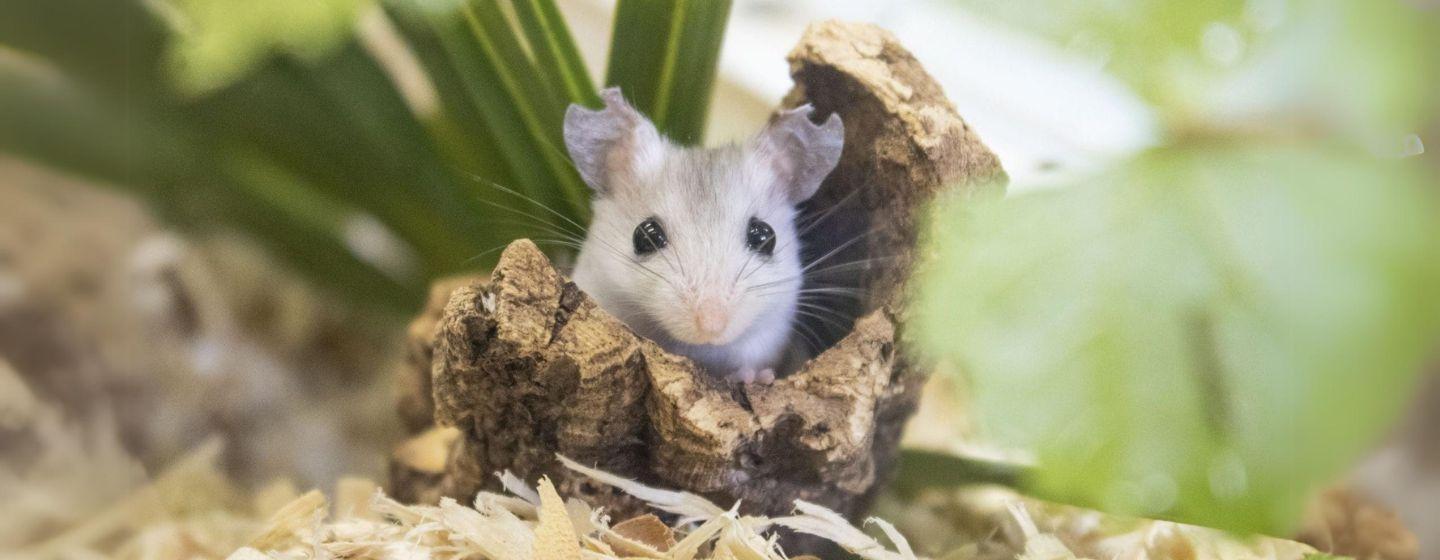What Can a Tiny Mouse Teach Us About Climate Change?


Walking or driving along the coast in North Carolina, you can’t help but notice how dynamic its ecosystems are. Coastal areas are constantly being shaped by waves, wind, tides, and storms, all of which have become more powerful due to rising sea levels and stronger storms fueled by climate change. Coastal areas also face challenges from development and habitat loss.
It’s a lot.
And living in the center of it all is the beach mouse. There are six federally endangered subspecies of oldfield mouse, or beach mouse, that live on barrier islands and in coastal areas of Florida and Alabama.
These small, light-colored mice burrow into dunes to make nests. Active at night, they munch on insects and seeds. They prefer sandy slopes covered with sea grasses as well as interior sand dune ridges. A thriving beach mouse population is proof of a healthy coastal dune habitat.
And that’s where a study by researchers at the North Carolina Museum of Natural Sciences begins.
Researchers looked at the beach mice living near Tyndall Air Force Base in Panama City, Florida. The base stretches almost 18 miles along the Florida Gulf Coast and includes several barrier islands.
On October 10, 2018, Hurricane Michael, one of only four Category 5 hurricanes to make landfall in the US, slammed into the area. Researchers wanted to learn how this impacted the beach mice living there. Fortunately, there was data from before and after the storms to help them.
Researchers had access to monthly, long-term monitoring data thanks to a requirement of the Endangered Species Act (ESA). Baited tubes were buried in the ground in order to identify small animals by their tracks. The animals walk over ink pads and leave their marks on cardstock paper within the tubes.
Populations are then estimated by calculating the number of track tubes that are visited within a specific amount of time at a specific site to create a track index.
The ESA data gave researchers a unique opportunity to understand how the mice fared before and after the hurricane hit. In addition, Hurricane Sally made landfall nearby as a Category 2 storm on September 16, 2020. This gave the team a chance to see how the mice weathered a weaker and more common storm and then compare the two storms’ impacts on the mice populations.
Before the first hurricane, there were 96 tubes buried in the dunes and coastal areas that were checked every month as part of the ESA monitoring program. After the first storm, researchers monitored the 57 tubes that remained: 17 on each island and the rest on the mainland. The tubes were in habitats including dunes, grasslands and scrub or remnant dunes with small shrubs and trees.
The researchers found beach mice at 48 of the 57 track-tube sites before the Cat 5 storm but only at 39 sites after the storm. The tubes were gone, you can guess what happened to the mice.
Interestingly, two years later, there were mice in all 57 track-tube sites before and after Hurricane Sally.
The researchers combined the population data from the track tubes with satellite images showing sand dune height to find that Hurricane Michael washed away more than three feet of sand dune in some areas.
These findings suggest that during the stronger storms, the mice move to higher ground to survive. That’s not surprising, but it turns out the higher the dune, the better the chance of survival. It also showed that dune heights approaching six feet in height were the best.
Habitat type was another factor in mice’s survival, with dunes providing the best protection, followed by grasslands and scrub.
The study shows that beach mice are adapted to survive in dynamic coastal environments with regular hurricane strikes. That’s evident because even with the devastation created by Hurricane Michael, the population rebounded by the time the weaker Hurricane Sally struck.
However, as climate change fuels stronger and more frequent storms, there’s a question about how resilient coastal wildlife will be. It’s clear that high elevations, especially in dune habitats, are important in helping coastal wildlife resistance and resilience. Researchers say that information should be considered in habitat restoration after storms, especially as sea level rise continues.